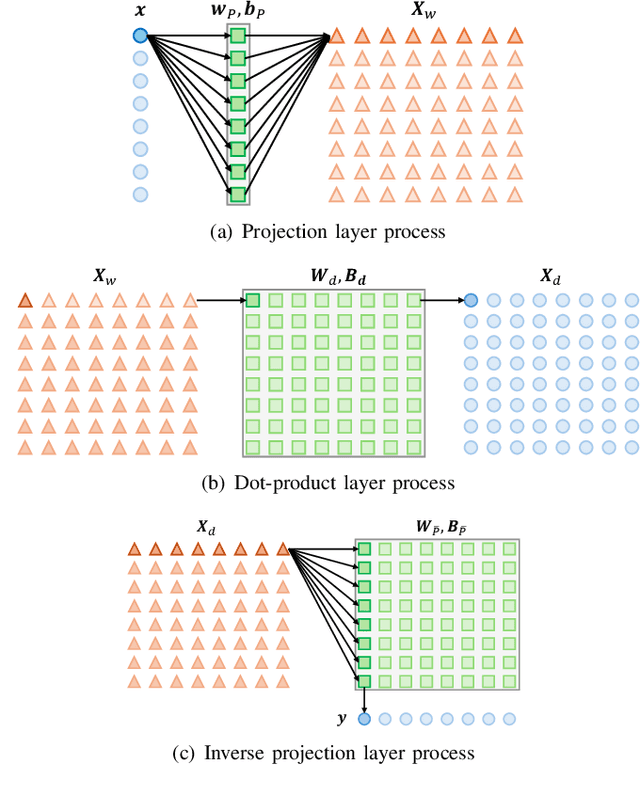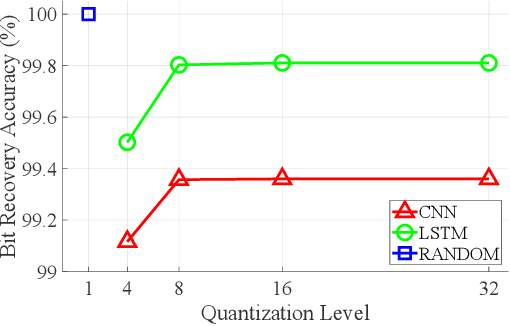Donald R. Reising
Transformers -- Messages in Disguise
Nov 15, 2024



Abstract:Modern cryptography, such as Rivest Shamir Adleman (RSA) and Secure Hash Algorithm (SHA), has been designed by humans based on our understanding of cryptographic methods. Neural Network (NN) based cryptography is being investigated due to its ability to learn and implement random cryptographic schemes that may be harder to decipher than human-designed algorithms. NN based cryptography may create a new cryptographic scheme that is NN specific and that changes every time the NN is (re)trained. This is attractive since it would require an adversary to restart its process(es) to learn or break the cryptographic scheme every time the NN is (re)trained. Current challenges facing NN-based encryption include additional communication overhead due to encoding to correct bit errors, quantizing the continuous-valued output of the NN, and enabling One-Time-Pad encryption. With this in mind, the Random Adversarial Data Obfuscation Model (RANDOM) Adversarial Neural Cryptography (ANC) network is introduced. RANDOM is comprised of three new NN layers: the (i) projection layer, (ii) inverse projection layer, and (iii) dot-product layer. This results in an ANC network that (i) is computationally efficient, (ii) ensures the encrypted message is unique to the encryption key, and (iii) does not induce any communication overhead. RANDOM only requires around 100 KB to store and can provide up to 2.5 megabytes per second of end-to-end encrypted communication.
Learning from Power Signals: An Automated Approach to Electrical Disturbance Identification Within a Power Transmission System
Sep 08, 2023Abstract:As power quality becomes a higher priority in the electric utility industry, the amount of disturbance event data continues to grow. Utilities do not have the required personnel to analyze each event by hand. This work presents an automated approach for analyzing power quality events recorded by digital fault recorders and power quality monitors operating within a power transmission system. The automated approach leverages rule-based analytics to examine the time and frequency domain characteristics of the voltage and current signals. Customizable thresholds are set to categorize each disturbance event. The events analyzed within this work include various faults, motor starting, and incipient instrument transformer failure. Analytics for fourteen different event types have been developed. The analytics were tested on 160 signal files and yielded an accuracy of ninety-nine percent. Continuous, nominal signal data analysis is performed using an approach coined as the cyclic histogram. The cyclic histogram process will be integrated into the digital fault recorders themselves to facilitate the detection of subtle signal variations that are too small to trigger a disturbance event and that can occur over hours or days. In addition to reducing memory requirements by a factor of 320, it is anticipated that cyclic histogram processing will aid in identifying incipient events and identifiers. This project is expected to save engineers time by automating the classification of disturbance events and increase the reliability of the transmission system by providing near real time detection and identification of disturbances as well as prevention of problems before they occur.
Assessing Adversarial Replay and Deep Learning-Driven Attacks on Specific Emitter Identification-based Security Approaches
Aug 07, 2023Abstract:Specific Emitter Identification (SEI) detects, characterizes, and identifies emitters by exploiting distinct, inherent, and unintentional features in their transmitted signals. Since its introduction, a significant amount of work has been conducted; however, most assume the emitters are passive and that their identifying signal features are immutable and challenging to mimic. Suggesting the emitters are reluctant and incapable of developing and implementing effective SEI countermeasures; however, Deep Learning (DL) has been shown capable of learning emitter-specific features directly from their raw in-phase and quadrature signal samples, and Software-Defined Radios (SDRs) can manipulate them. Based on these capabilities, it is fair to question the ease at which an emitter can effectively mimic the SEI features of another or manipulate its own to hinder or defeat SEI. This work considers SEI mimicry using three signal features mimicking countermeasures; off-the-self DL; two SDRs of different sizes, weights, power, and cost (SWaP-C); handcrafted and DL-based SEI processes, and a coffee shop deployment. Our results show off-the-shelf DL algorithms, and SDR enables SEI mimicry; however, adversary success is hindered by: the use of decoy emitter preambles, the use of a denoising autoencoder, and SDR SWaP-C constraints.
An Investigation into the Impacts of Deep Learning-based Re-sampling on Specific Emitter Identification Performance
May 05, 2023



Abstract:Increasing Internet of Things (IoT) deployments present a growing surface over which villainous actors can carry out attacks. This disturbing revelation is amplified by the fact that a majority of IoT devices use weak or no encryption at all. Specific Emitter Identification (SEI) is an approach intended to address this IoT security weakness. This work provides the first Deep Learning (DL) driven SEI approach that upsamples the signals after collection to improve performance while simultaneously reducing the hardware requirements of the IoT devices that collect them. DL-driven upsampling results in superior SEI performance versus two traditional upsampling approaches and a convolutional neural network only approach.
Improving RF-DNA Fingerprinting Performance in an Indoor Multipath Environment Using Semi-Supervised Learning
Apr 02, 2023Abstract:The number of Internet of Things (IoT) deployments is expected to reach 75.4 billion by 2025. Roughly 70% of all IoT devices employ weak or no encryption; thus, putting them and their connected infrastructure at risk of attack by devices that are wrongly authenticated or not authenticated at all. A physical layer security approach -- known as Specific Emitter Identification (SEI) -- has been proposed and is being pursued as a viable IoT security mechanism. SEI is advantageous because it is a passive technique that exploits inherent and distinct features that are unintentionally added to the signal by the IoT Radio Frequency (RF) front-end. SEI's passive exploitation of unintentional signal features removes any need to modify the IoT device, which makes it ideal for existing and future IoT deployments. Despite the amount of SEI research conducted, some challenges must be addressed to make SEI a viable IoT security approach. One challenge is the extraction of SEI features from signals collected under multipath fading conditions. Multipath corrupts the inherent SEI features that are used to discriminate one IoT device from another; thus, degrading authentication performance and increasing the chance of attack. This work presents two semi-supervised Deep Learning (DL) equalization approaches and compares their performance with the current state of the art. The two approaches are the Conditional Generative Adversarial Network (CGAN) and Joint Convolutional Auto-Encoder and Convolutional Neural Network (JCAECNN). Both approaches learn the channel distribution to enable multipath correction while simultaneously preserving the SEI exploited features. CGAN and JCAECNN performance is assessed using a Rayleigh fading channel under degrading SNR, up to thirty-two IoT devices, and two publicly available signal sets. The JCAECNN improves SEI performance by 10% beyond that of the current state of the art.
 Add to Chrome
Add to Chrome Add to Firefox
Add to Firefox Add to Edge
Add to Edge